Welcome to Brevens Bruk
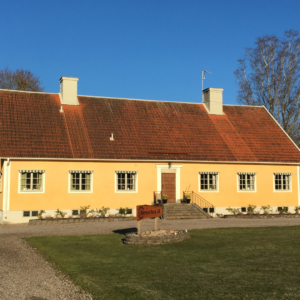

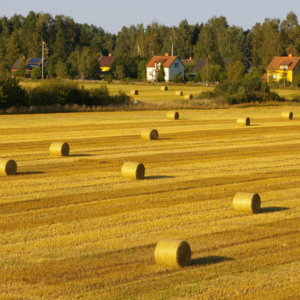
Brevens Bruk AB is part of the corporate group Bystad Holding AB. We are a modern forestry and agricultural company, and an estates management company. The group originally included iron works and iron foundry but these industries have now ceased.
The main industry today is forestry, which is carried out sustainably on 13,800 hectares of productive forest land. The company is double certified according to FSC® and PEFC™. This means that we conduct a long-term business with regard to economic, social and environmental values.
Farming is carried out on approx. 500 hectares, of which approx. 320 hectares in own operation, the rest is leased out. Since the summer of 2018, Brevens Bruk AB has been running ECO farming with suckling cow production starting in 2019.
The real estate business is focused on operating business premises, rental buildings and short-term rentals, with a long-term ambition to increase tourism.
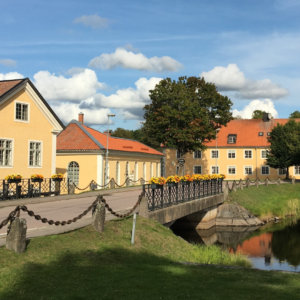
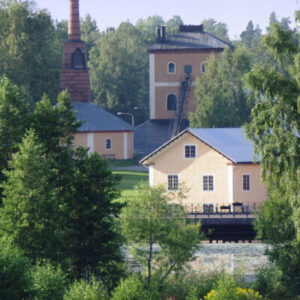
Brevens Bruk is located 30 miles southeast of Örebro and is just two hours from the Swedish capital city Stockholm. It is a beautiful village, where most of the buildings date back to the 17th to 19th centuries.
Another aspect that makes Brevens Bruk so appealing and attractive is the water that surrounds the area. To the west you will find the lakes Botaren and Sottern, and passing through the village is the Brevens stream which eventually flows into the Baltic Sea. To the east you will find another lake, Högsjön. A tour to Sottern will take you to a beautiful archipelago nature reserve where osprey and black-throated diver can be found amongst the local wildlife.
Taking a walk through the beautiful village is to take a walk back in history, not only in the life and work of the village but also in it’s architectural heritage. In addition to the beautiful surroundings there are a number of historically interesting buildings including Brevens Bruks Manor House, which dates back to 1698, the church built in 1842 and the blast furnace and calcinatory both dating from the 19th century. The calcinatory is one of the most well known buildings, with an eight-squared roof. In addition, the old carpenters workshop is used by the regional history society as a meeting place. Also of interest is the Brevens Bruk museum, which shows how the village has developed through the years.
Within the small and charming village there are also some interesting shops including an art and handcraft shop and a gallery. In the more modern Brevensgården you will find a restaurant, a pub, an assembly hall and also rooms available for rent. Should you wish to rent a holiday home for a short time these are available either in the village or just outside Brevens Bruk. Throughout the year there are a number of different events including markets, music events, art exhibitions and much more.
You won’t be surprised to learn that Brevens Bruk has been declared a national historical monument.
Environment
Brevens Bruk has a unique built environment with a building structure that resembles the well-known mills in, for example, Uppland. The majority of the buildings that today characterize the mill environment were added during the 1830s-40s. It was a successful and expansive time for the mill and then the economic conditions were created for the characteristic built environment that characterizes Brevens Bruk.
Later in the 19th century, several production buildings and housing for employees were added. They were given a similar design with alcohol-plastered facades and areas in smooth plaster. During the 1840s, a mill church was built in the neoclassical style. The church was also used as a school for the mill before a special school for the mill’s children was built during the 1870s. The church was owned by the mill until the 1940s. It today belongs to the Asker-Lännäs pastorate.
As was usual in this type of mill environment, the school was given a very lavish design for the time with an almost monumental character. The school was built because Sofia and Johan August Anckarsvärd funded the construction of a school. Next to the school building, a residence for teachers and a priest was also built in 1914.
The only building that was added to the central part of the mill environment after the 19th century is the mill office, which was built in an adapted style in the late 1940s. Another change that occurred during the 20th century was that the pink color of the mill buildings was consistently changed to today’s ochre yellow color during the 1930s.
Given that the buildings and facilities in Brevens Bruk have been classified by the County Administrative Board as having “particularly high cultural and historical value”, large parts of Brevens Bruk have been declared a listed building.
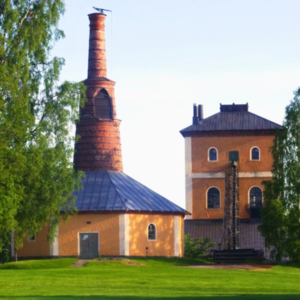
Brevens Bruk has medieval origins. Brevens farm is mentioned in 1317 when it was donated to Riseberga monastery by vicar Laurentius in Kumla.
In 1676, Claes Rålamb (1622-1698) received permission from the Bergskollegium to start an ironworks business and then established, among other things, a bar iron forge with hammers at Lilla Breven. In order to further refine the iron, a knurled hammer (a hammer for weaker forgings than bar iron) was built. The availability of forest was the main reason that Rålamb received the permit, the condition was that he would take the charcoal for iron production from his own forest. At that time, the state had an ambition to decentralize iron handling to places outside Bergslagen due to the lack of forests in that area. Brevens Bruk had the natural conditions for ironworks operations with good access to hydroelectric power and large, relatively unaffected surrounding forests.
His son Gustaf Rålamb (1675-1750) took over the mill after his father. He expanded the business and bought the mill at Stora Breven, half a kilometer below Lilla Breven. Stora Breven came to be called Nedre Bruket. Today, two 18th-century buildings have been preserved at the site of Nedre Bruket.
During the mid-18th century, the price of bar iron rose and it became profitable to bring in ore from distant places such as Utö in the Stockholm archipelago. From Utö, the ore was transported on barges across Mälaren and Hjälmaren and on to Breven Bruk.
After Gustaf Rålamb’s death in 1765, the estate complex he had built up began to be dismantled. In 1774, the property was sold to the equestrian master David Henrik Hildebrand (1761-1808). He had significant financial assets and was the owner of, among other things, Ericsberg in Södermanland. He made Bystad and Breven a trust in 1778.
The trust was transferred to his niece Sophia Ulrika Bonde (1787-1867), who in 1815 married the adjutant general, Count Johan August Anckarsvärd (1783-1874). They developed production and found new markets for the mill’s various products, including by manufacturing components in castings for the machines that were then needed for the extensive mechanization of agriculture. A new blast furnace, roasting oven and a mechanical workshop were built in the 1820s. An approximately 300-meter-long straight canal was built from the current Herrgårdsdammen to lead the water further past the Lower Mill; the canal is preserved in its entirety today.
An important reason for the good development of the Breven Mill during the 19th century was the Western Main Line, which was completed in the 1850s. The main line was supplemented with a branch line from Hallsberg, which, among other things, made it possible to transport the ore all the way to Kilsmo station, half a mile north of Brevens Bruk. During the 1880s, a narrow-gauge railway was built between Kilsmo and Breven. The mill was responsible for the transports with its own steam locomotives. However, the track was removed in 1940 and the locomotive shed was later demolished.
At the beginning of the 20th century, it was time for the mill to be modernised again. The blast furnace was rebuilt in 1903 and a completely new roasting oven was built in 1905.
The declining iron business after the First World War led to a gradual winding down of the mill’s operations. In 1917, the bar iron hammer was taken out of service and the blast furnace was shut down in 1933. However, the foundry operations continued until the 1980s. As late as 1976, a completely new foundry was built, but the business never became profitable and was gradually phased out, and in 1986 the business was closed down for good.
The main industries for Brevens Bruk today are forestry, agriculture and property management.
Since the fideicommissary system was abolished in Sweden in the 1960s, the property has been managed as a fideicommissary limited liability company within the Gripenstedt family. Johan Gripenstedt (1922-2009) was the last fideicommissary.
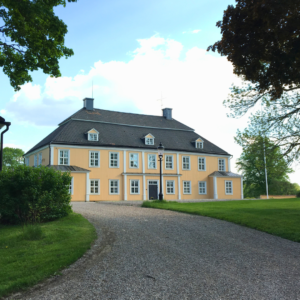
Bystad manor is located on the northern shore of Lake Sottern and dates back to the 14th century. The farm got its current appearance mainly during the 1720s and is today a well-preserved example of a late Carolingian facility.
Bystad was a manor house as early as the 14th century and was inhabited by Böghil van Hoo, who in 1380 was appointed district chief in Östra Närke. The current farm facility was created by Governor Bror Andersson Rålamb at the turn of the century 1500-1600. His son Claes Brorsson Rålamb began building the Late Carolingian facility. The farm got its current design mainly in the 1720s.
Bystad and Brevens Bruk becomes entailed estate
During the 17th century, Brevens Bruk was incorporated into Bystad. In 1778, Bystad and Brevens Bruk became entailed estate. At the beginning of the 19th century, the property was run by Johan August Anckarswärd, who vigorously modernized both the mill and the farm. He was succeeded by his son-in-law, Johan August Gripenstedt.
Johan August and Eva Gripenstedt
Johan August Gripenstedt (1813–1874) was one of Sweden’s most important personalities during his time. He married in 1842 Eva Sofia Charlotta Anckarswärd (1819–1887). Eva’s family belonged to the liberal circles that worked for a modernization of Sweden, and Johan August thus became strongly politically involved. In 1848 he was given a seat in the government, and he was Minister of Finance from 1856 to 1866. He worked for free trade and was of crucial importance for the expansion of the main line network. He also made a significant contribution to the representation reform, when the county parliament was abolished in 1866. Johan August Gripenstedt’s efforts during the 19th century to modernize the country, became crucial to Sweden’s development into a welfare society later in the 20th century. While Johan August was involved in the country’s management and lived in Stockholm for most of the year, it was Eva who took care of the day-to-day running of their properties.
The main building
The timbered main building is built on two floors. Most rooms have a well-preserved 18th-century décor with, among other things, rococo-tiled stoves on iron feet and parapet panels. In the lower and upper hall, the walls are decorated with paintings from the 18th century, made directly on the panel.
The manor’s buildings
Many buildings at the manor have been preserved, including warehouses from the end of the 18th century, as well as stables, a laundry room and a driver’s and manager’s residence from the end of the 19th century. In the yard there is also a well-preserved store house from the late 16th or early 17th century. The type of building is extremely unusual and the store house at Bystad is the only one of its kind in the county. In the whole country there is only one direct equivalent, the store house at Björkvik, Östra Ryds parish in Östergötland, which was built in 1893 as a copy at Skansen. Bystad manor is a well-preserved and complete Late Carolingian facility from the 1720s. The buildings in the central courtyard have a very high building and architectural value. Together they form a uniform and well-cohesive manor environment.
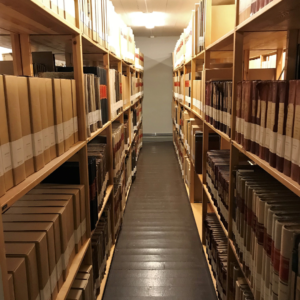
In Brevens Bruk´s archive you will find documents concerning Brevens Bruk, Bystad, Nynäs and the owner families.
The aim from the company/family has been to collect and register all archives which previously were dispersed, in order to have the economic, cultural and social history gathered. The material not only gives a historical picture of an iron foundry during more than 300 years of operation, but also gives the equivalent picture of the extensive forestry and agriculture which was connected with the iron industry. The material also tells about the conditions of life for both owners and employees during several hundred years. Most of the documents are from the 19th and 20th century, but there are also documents as far back as the 16th century.
Apart from documents there are also a large number of maps, photos and films in the archive.
For more information about our archive, please contact bbab@brevens.se

